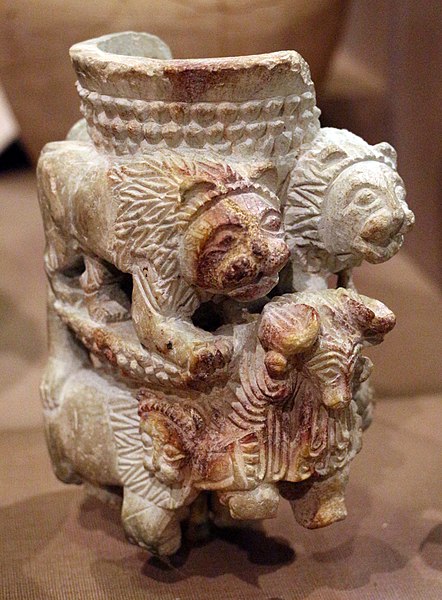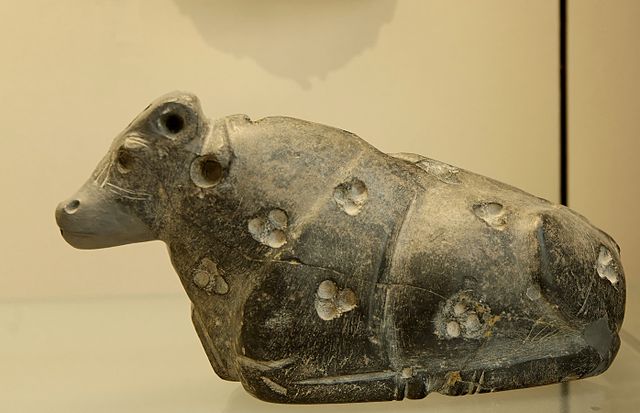The Jemdet Nasr Period is an archaeological culture in southern Mesopotamia. It is generally dated from 3100 to 2900 BC. It is named after the type site Tell Jemdet Nasr, where the assemblage typical for this period was first recognized. Its geographical distribution is limited to south-central Iraq. The culture of the proto-historical Jemdet Nasr period is a local development out of the preceding Uruk period and continues into the Early Dynastic I period.
Jemdet Nasr Period cylinder seal from glazed steatite and modern seal impression (found in Tell Khafajah, Iraq.)
The Blau Monuments combine proto-cuneiform characters and illustrations, 3100-2700 BC. British Museum.
Painted ceramic vessel from the Jemdet Nasr period, found at Khafajah. Museum of the Oriental Institute, Chicago.
Cup with nude heroes. Jemdet Nasr to Pre-Dynastic period, 3000-2600 BC.
Jemdet Nasr is a tell or settlement mound in Babil Governorate (Iraq) that is best known as the eponymous type site for the Jemdet Nasr period, and was one of the oldest Sumerian cities. It is adjacent to the much larger site of Tell Barguthiat. The site was first excavated in 1926 by Stephen Langdon, who found Proto-Cuneiform clay tablets in a large mudbrick building thought to be the ancient administrative centre of the site.
A second season took place in 1928, but this season was very poorly recorded. Subsequent excavations in the 1980s under British archaeologist Roger Matthews were, among other things, undertaken to relocate the building excavated by Langdon. These excavations have shown that the site was also occupied during the Ubaid, Uruk and Early Dynastic I periods. Based on texts found there mentioning an ensi of NI.RU that is thought to be its ancient name. During ancient times the city was on a canal linking it to other major Sumerian centers.
Sitting bull Louvre AO7021
A Pottery jar from Jemdet Nasr period (3100-2900)B.C Erbil Civilization Museum
A five-day ration list. Each line of proto-cuneiform text mentions rations for one day. The sign for "day" and the numbers 1-5 are easily identifiable. Probably from Jemdet-Nasr, Iraq. Circa 3000 BCE. British Museum
Apprentice scribes learned the writing system through lists of related signs, like this one dealing with place names. From Jemdet-Nasr, Iraq. 3000-2900 BCE. British Museum








